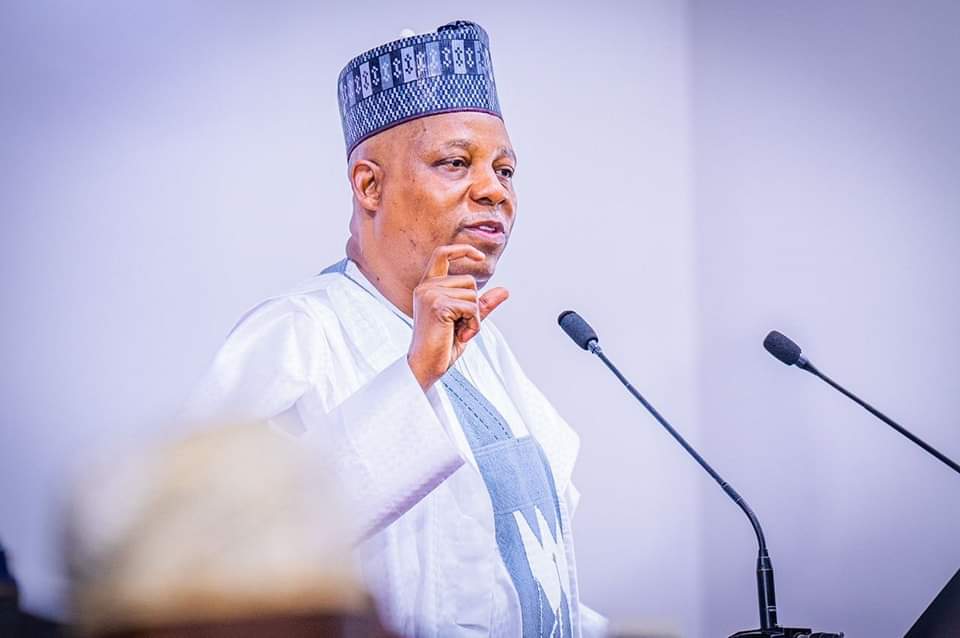How FG should approach food crisis
At the inauguration of the Presidential Food Systems Coordination Unit (PFSCU), Vice President Kashim Shettima said: “The nation is facing a rare food security crisis, and the sooner we come to terms with the reality, the better.” Thus, the Bola Ahmed Tinubu government has finally acknowledged that Nigerians are facing hunger and food crises. In […]

Vice President Kashim Shettima
At the inauguration of the Presidential Food Systems Coordination Unit (PFSCU), Vice President Kashim Shettima said: “The nation is facing a rare food security crisis, and the sooner we come to terms with the reality, the better.” Thus, the Bola Ahmed Tinubu government has finally acknowledged that Nigerians are facing hunger and food crises.
In response, the government has initiated several measures to address hunger and hardship. These actions include the planned distribution of 20 trucks of rice to each of the 36 states and the Federal Capital Territory (FCT), Abuja, as well as the establishment of the PFSCU. Additionally, the National Council on Nutrition (NCN) has made significant decisions, such as approving new measures to combat malnutrition and food insecurity, and creating a national nutrition dashboard. This dashboard, to be hosted by the Federal Ministry of Budget and Economic Planning and made available on the NCN website, aims to improve oversight and coordination of nutrition-related initiatives nationwide. The government states that these efforts are designed to engage states, development partners, and other key stakeholders in addressing the soaring prices of commodities and the overall food insecurity in the country.
However, are these measures sufficient to tackle the current food crisis? The common man will only appreciate and commend these efforts if they quickly bring food to the table and help reduce the rising prices of commodities.
For the federal government to achieve any significant progress in addressing the food crisis, its efforts must directly benefit the common man; otherwise, they will be in vain. Therefore, a well-planned programme that reaches the grassroots level is essential, taking into account the unique characteristics of each state.
- How Ginger blight, seeds’ scarcity pushed Kaduna farmers to other crops
- Farmers explain ways to increase tomato availability
The federal government should design a tripartite approach where the federal, state, and local governments work together to achieve one goal: sufficient food production. This effort should include both short-term and long-term solutions. The short-term solutions are what the government is currently doing; distributing food items and stipends. However, the long-term solutions are more impactful. They involve providing real farmers with farm implements, clearing virgin farmlands, and restoring security in areas where farmers have been prevented from farming.
Benchmarking should also be part of this approach, learning from what other countries that have faced serious food crises have successfully implemented.
For example, in the 1960s, when India faced severe food shortages, the country launched the Green Revolution, which introduced high-yield variety seeds, improved irrigation practices, and the use of fertilizers and pesticides. This programme transformed India’s agriculture, and by the 1970s, India had achieved self-sufficiency in food grains. Similarly, in the late 20th century, China faced food insecurity issues and launched agricultural reforms. The Chinese government implemented the Household Responsibility System, which allowed farmers to own land and sell surplus produce in the market, leading to significant increases in food production.
Another example is Brazil’s Zero Hunger Programme. In the early 2000s, Brazil faced widespread hunger and malnutrition. The government launched the Zero Hunger Programme (Fome Zero) in 2003, which included initiatives like direct financial support for families, food distribution programs, and incentives for small-scale agriculture. This programme significantly reduced hunger and improved food security in the country. In Africa, Ethiopia is a notable example. Despite recurrent food crises due to droughts and other factors, recent years have seen the government focusing on agricultural development and infrastructure improvement. Programmes like the Productive Safety Net Programme (PSNP) have helped build resilience among vulnerable communities, leading to improved food security.
Nigeria has no business facing a food crisis given its abundant fertile land and human resources. What is needed is the political will to develop the agricultural sector through a combination of technological advancements, policy reforms, and targeted programmes that reach the real farmers. Nigeria’s recent agricultural programmes—the Anchor Borrowers Programme, Presidential Fertiliser Initiative (PFI), Youth Farm Lab, Paddy Aggregation Scheme, Agricultural Trust Fund, Presidential Economic Diversification Initiative (PEDI), Food Security Council, etc.—are good; they just need to be remodeled and honestly implemented.
Muhammad wrote from Abuja
